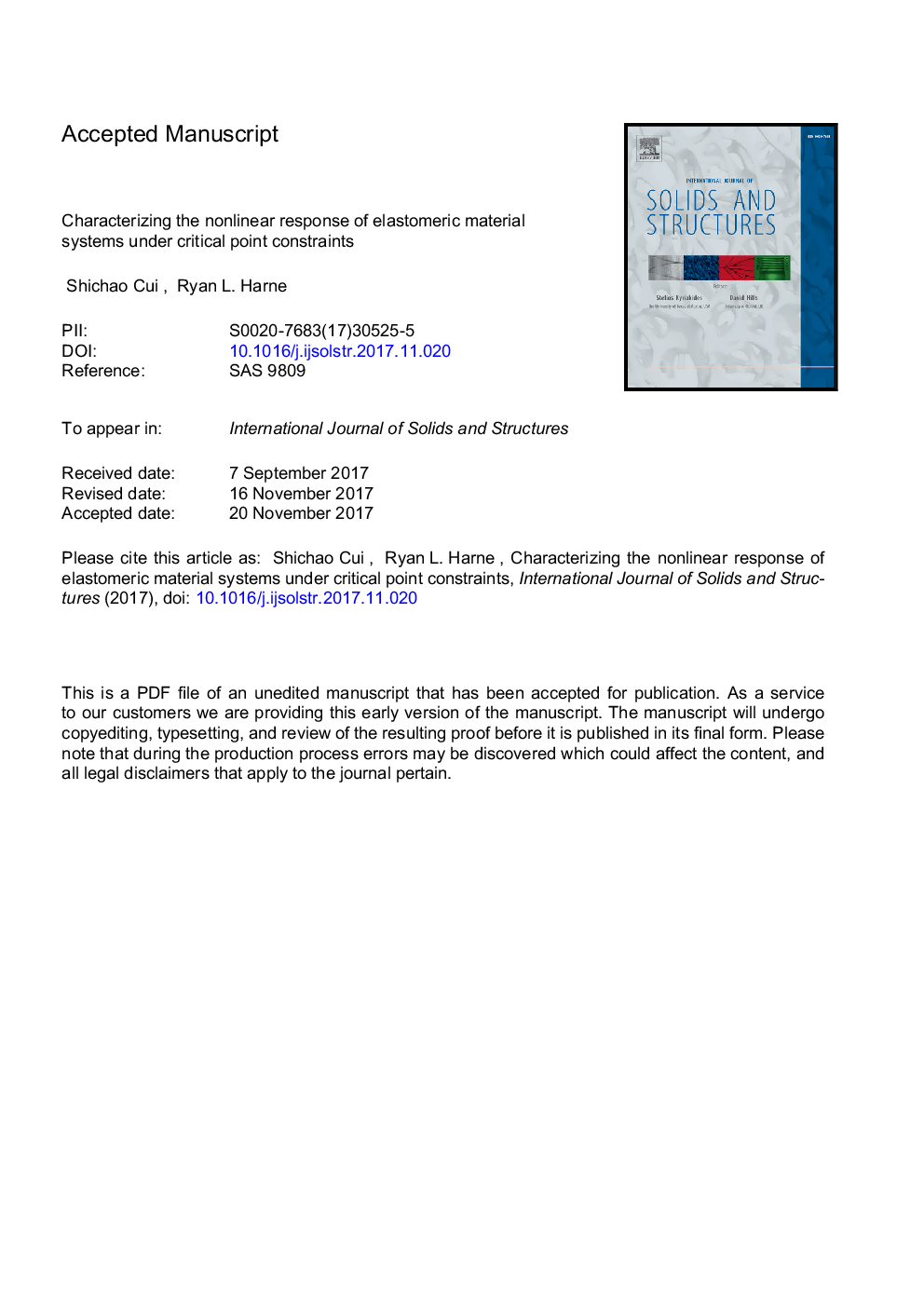| Article ID | Journal | Published Year | Pages | File Type |
|---|---|---|---|---|
| 6748424 | International Journal of Solids and Structures | 2018 | 31 Pages |
Abstract
Engineered materials that dissipate large shock and vibration through tailoring microscopic properties are of growing interest. To this end, reversible buckling of slender, elastomeric beams serving as microscopic constituents of engineered material systems is shown to be effective to tune the mechanical properties. Yet, the viscoelasticity and nonlinear deformations inherent in an engineered, elastomeric material system having critically constrained internal constituents challenge the understanding of the macroscopic dynamic properties borne out of such intersection of complex characteristics. This research undertakes analytical and experimental efforts considering a model specimen to illuminate how criticality, viscoelasticity, and nonlinearity interact to yield the macroscopic dynamic behavior of engineered, elastomeric material systems subjected to harmonic forcing. The analysis reveals that large strain of the internal beam constituents is a predominant mode of harmonic energy dissipation for more elastically dominated material characteristics. In contrast, a more equitable balance of viscous and elastic phenomena results in dissipation properties that involve history dependent reactions in tandem with the instantaneous strain on the constituents. Nonlinear deformations induced by critical constraints on the internal viscoelastic beams are discovered to strongly govern the relative amplitude of force transmission and significance of frequency tuning observed macroscopically. Experiments validate the findings and emphasize the non-intuitive character of elastomeric material system behaviors by virtue of the intersection of viscoelasticity, nonlinearity, and critical point constraints.
Related Topics
Physical Sciences and Engineering
Engineering
Civil and Structural Engineering
Authors
Shichao Cui, Ryan L. Harne,
